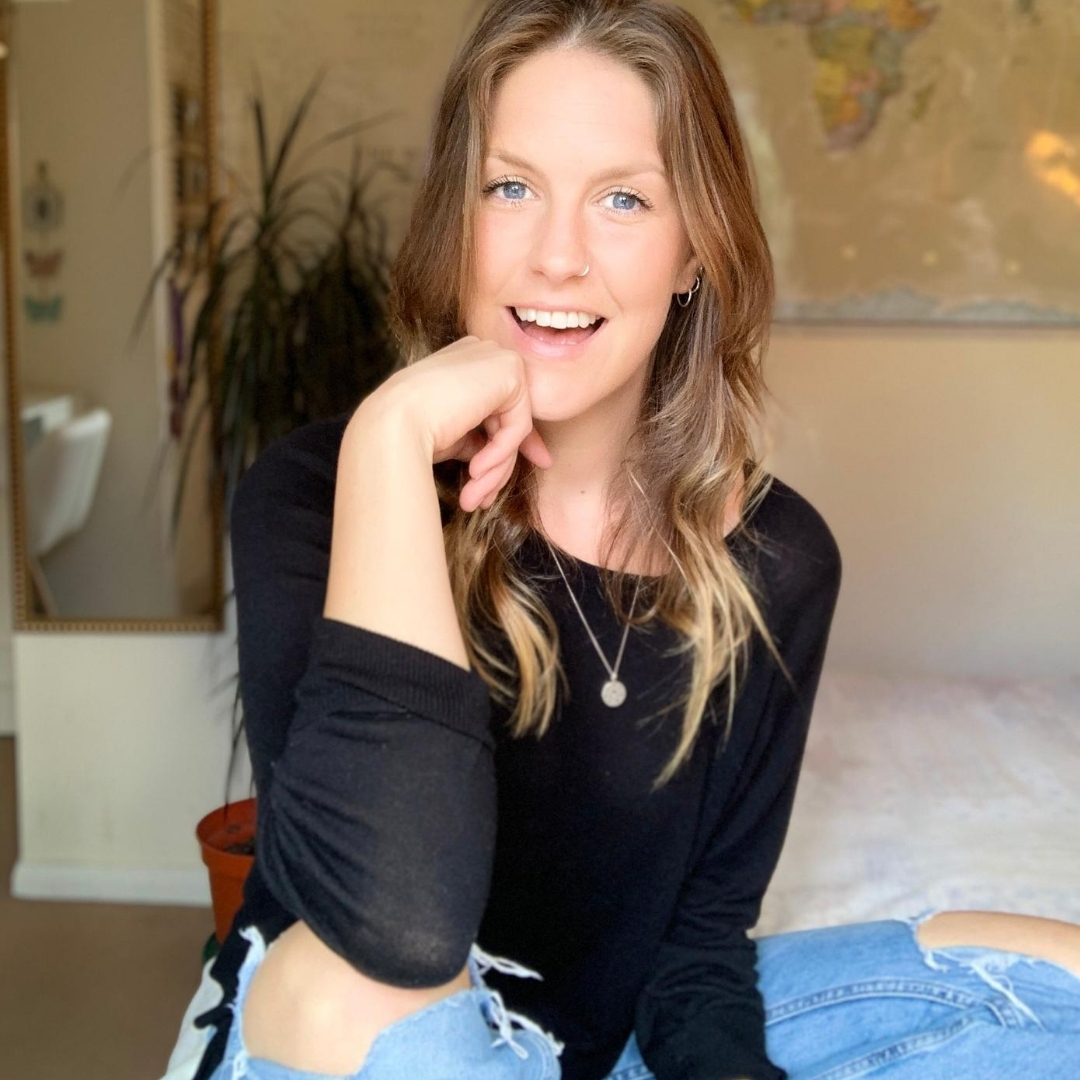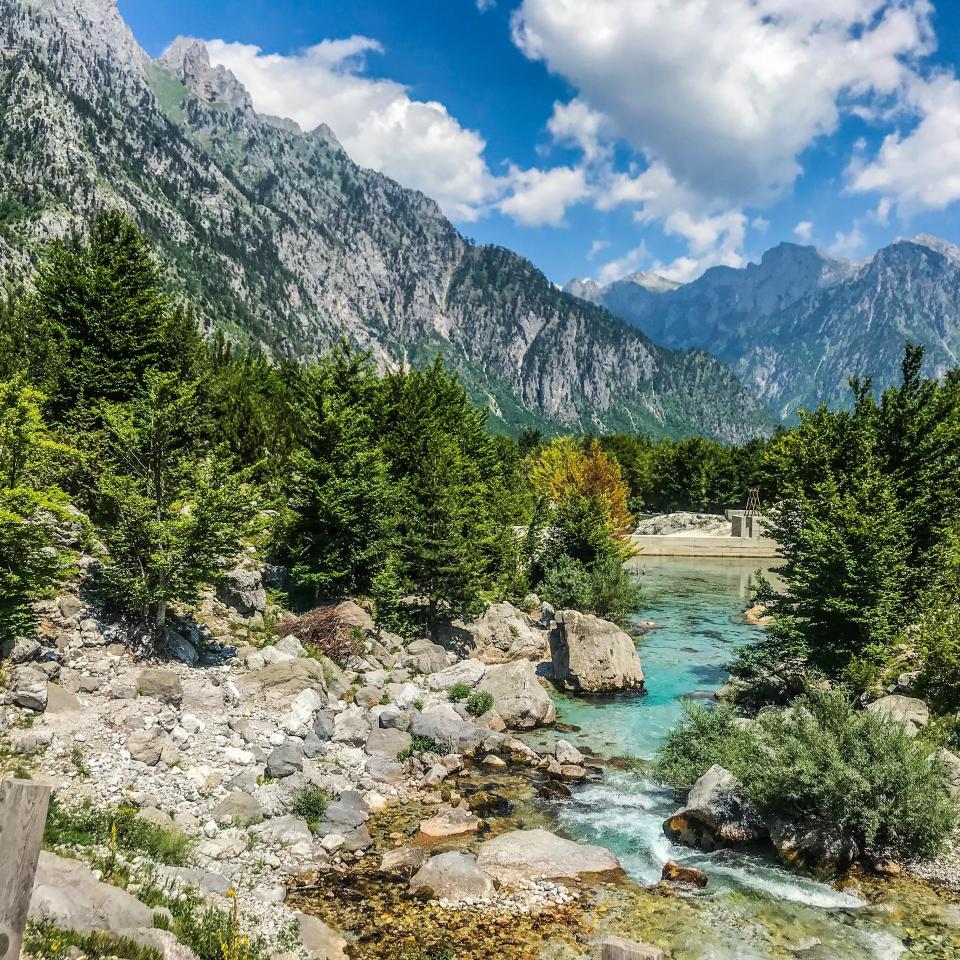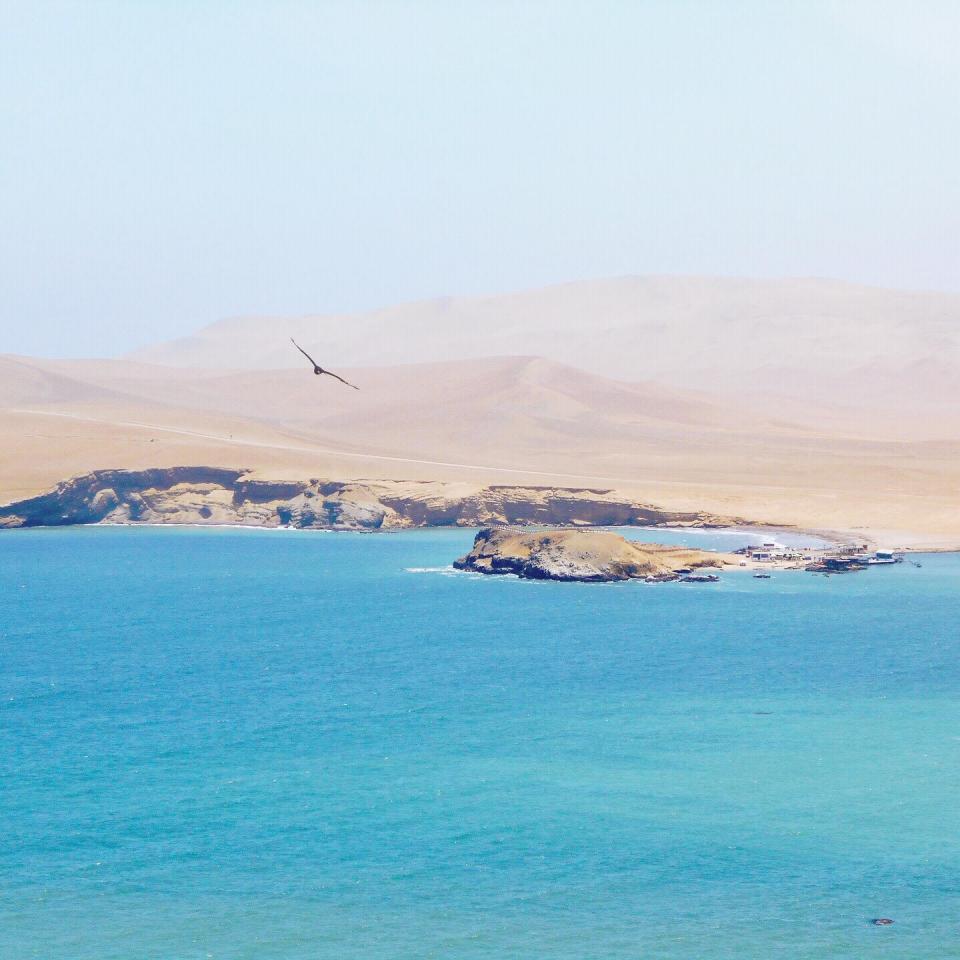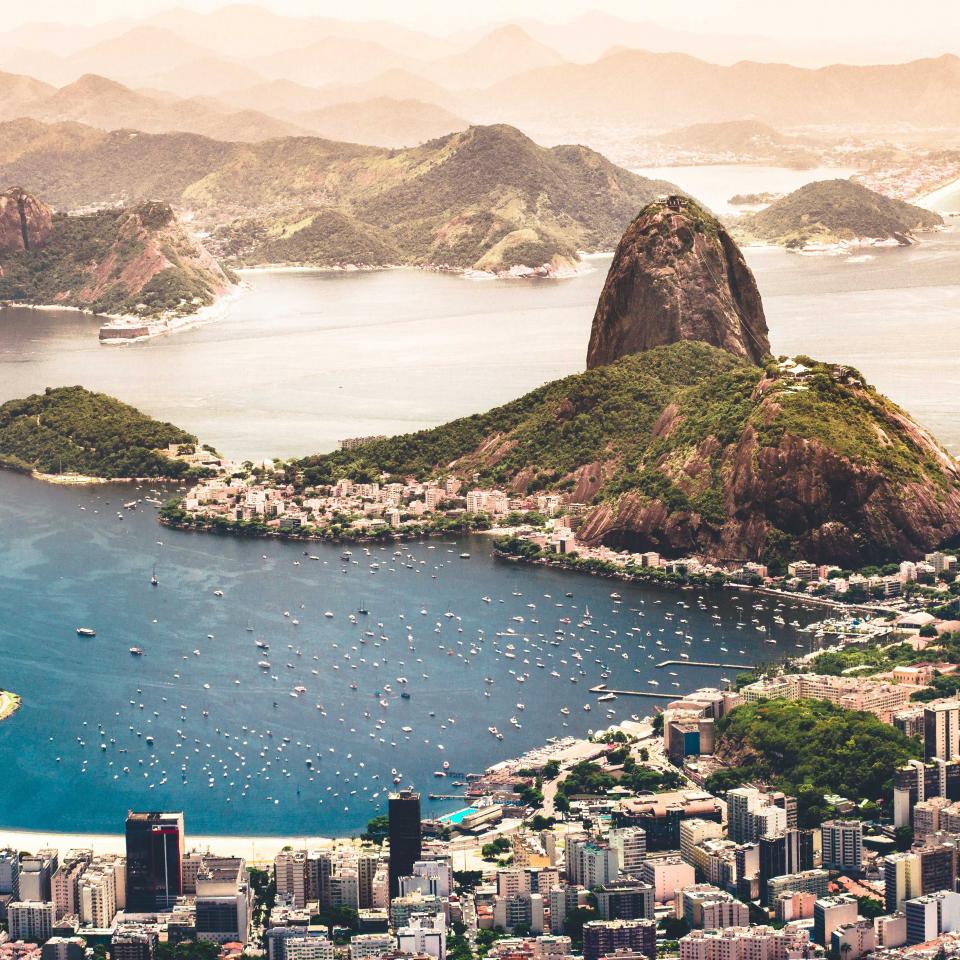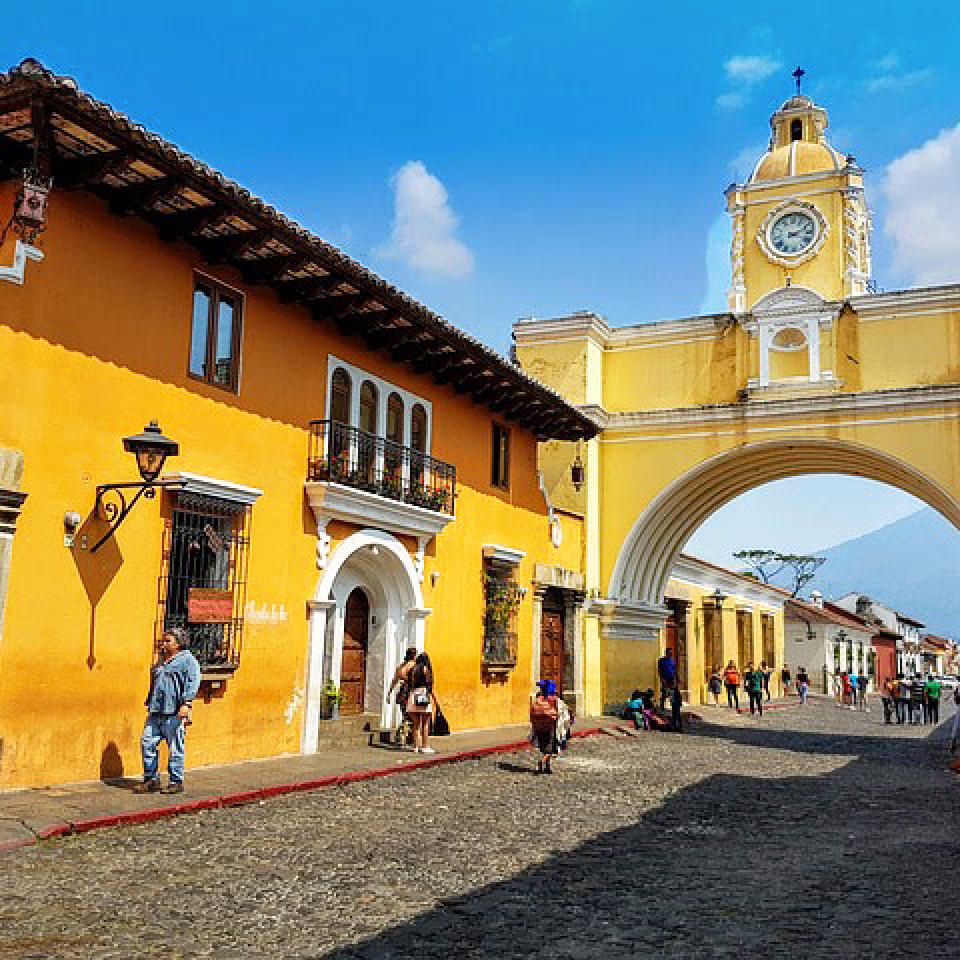As the first Bolivian town on crossing the border from Puno in Peru, Copacabana is on most backpacker’s itinerary. Based on the shore of the highest lake in the world, lake Titicaca (3800m / 12,500 ft), Copacabana offers the perfect gateway for exploring the magical islands of Isla del Sol and Isla de la Luna, which are bursting with captivating Incan ruins and Bolivian charm. Here is your very own Copacabana travel guide with everything you need to know to explore this majestic town and the surrounding islands.
Go Travel and Talk TOP TIP: To combat the altitude sickness that comes with exploring Bolivia, come prepared with Coca Tea, Coca Leaves, Sorojchi tablets (takes these 24 hours before you reach altitude as they are a preventive measure) and drink lots and lots of water.
If you are from Peru to Copacabana there are direct buses from Cusco, Arequipa and Puno (from Terminal Zonal in Puno NOT Terminal Terrestre). You can travel with Oltursa, Trans Titicaca or Cruz del Sur or you can take the Peru Hop.
The Peru Hop:
The Peru Hop assists you at both the Peruvian side of the border (Yungani) and the Bolivian, with all the required paperwork, but it is very straight forward. Bear in mind that whilst the Peru Hop is a very good option in terms of safety and border help, it is a more expensive option and honestly, the border crossing is SO easy and done in a matter of minutes. Also, once you are in Bolivia, you will travel the last hour to Copacabana in a Bolivian bus which feels a like a bit of a rip off for the price paid. However, they are a great option if you feel a little nervous about crossing borders on your own. For the Peru Hop check out their website where you will find times, prices and multi stop trip itineraries.
Once you are on the Bolivian bus, it is then a quick 15 minutes to Copacabana. Make sure you get a window seat because the views of lake Titicaca on entering Bolivia and Copacabana are incredible! The bus will drop you off at the lake in Copacabana by a huge white anchor statue and in front of some bars and restaurants.
Bus:
If you decide against the Peru Hop and are coming to Copacabana from Puno, make sure you leave from Terminal Zonal in Puno and not the main Terminal Terrestre bus station. A taxi will cost S/.1 (€0.25 / $0.30) to take you from one to the other as you are likely to enter into Terminal Terrestre if you are coming from elsewhere in Peru. Once you are at Terminal Zonal, catch a minivan to Yungani which takes 2-3 hours and costs around S/.6 (€1.50 / $2). Here you will need to fill out the immigration paperwork and get your entry stamp to Bolivia (see below for details). Then it is a short 15 minute bus/taxi to Copacabana, cost around B$5-10 (€1 / $1.50). Simple as that!
If you are travelling in reverse, from Copacabana to Puno in Peru, you can either book with Peru Hop online (get on the bus by the white anchor statue down by lake Titicaca), or head to the central Plaza Sucre where colectivos to ‘Kasani’ will be touting for business. It only takes 15 minutes to reach the border and if you take a colectivo it should cost no more than B$3 (€0.40 / $0.40).
Once at the border, you need to head into the immigration office, get your exit stamp and then cross the border into Peru. If you continue walking for a couple of minutes you will see the Peru immigration office where you complete more forms. Welcome to Peru! Once your forms are done, take a minivan/mototaxi to Yungani which is around S/.1 (€0.25 / $0.30) and from Yungani you will find a bus to Puno which takes around 2-3 hours and costs around S/.6 (€1.50 / $2). Once in Puno you can catch a bus for onward travel which is really easy.
If you take the Peru Hop, you stay on the bus from Copacabana all the way to Puno, where you either stay or continue on to the next place aboard the Peru Hop, which is usually Arequipa.
REMEMBER: The tourist entry for Bolivia is only valid for 30 days. If you need to extend this, go to La Paz or Sucre. For US citizens there is an entry charge. Keep your entry form as you will need to present this when you leave Bolivia.
Go Travel and Talk TOP TIP: Peru is 1 hour behind Bolivia, make sure you remember this when travelling between the two countries, I didn’t and became very confused with bus times in Puno!
Copacabana is TINY so everywhere can be explored on foot. To head to Isla de Sol or Isla de Luna you will need to take a boat from the lake side. Look out for the white anchor statue on the shore of Lake Titicaca (See the section below).
The Cerro Calvario in Copacabana holds huge spiritual and religious significance for the locals, and it is a stunning spot for glorious views over lake Titicaca and Copacabana. Head to the main street, La Paz, where you will see a winding staircase. If you are coming from the harbour of Copacabana it is about 250m set back from the lake. Look out for a street to your left rising up a slope which leads to an official path/winding staircase ~ don't do what we did and scale the side of the mountain, the path is much safer!
The climb will take around 30-40 minutes and you will pass through fourteen crosses, sacrifice tables and the locals of Copacabana offering their prayers to the divine. The climb can be quite tough because of the high altitude, you will climb to over 4000m (13,000 ft). Take your time and preserve your energy. It is worth it when you reach the top, with panoramic views over the ocean and Copacabana. Start walking at 5/5.30pm and pick a spot for the sunset, it is mesmerising.
Go Travel and Talk TOP TIP: Take a jumper or jacket as it gets cold when the sun begins to set and plenty of water (or a beer!), although there are a few stalls at the top. The only downside is the amount of litter on the way up, which is a real shame ~ please pick some up and help keep the place tidy :)
Head to Avenida 6 de Agosto which is the main street leading to and from the harbour and lake side (you can't miss it), selling lots of souvenirs, beautiful jewellery, alpaca sweaters and so much more.
Once you reach the Plaza de Armas take in the breathtaking beauty of the Basillia, before munching down on some giant popcorn – pronounced as pass-en-chia (Pasankalla). Also, check out the many fruit and veg markets, the colours are stunning and the buzz is electrifying.
Head to Mercado Modelo for some local cheap eats.
There are two main islands to visit close to Copacabana: Isla del Sol (Island of the Sun) and Isla del Luna (Island of the Moon). You can visit both in one day as a tour, but I advise strongly against this as you will only end up having one hour in each place and you will be massively missing out on an incredible experience. Also, please note that currently you cannot travel to the north part of Isla del Sol (as of February 2019) which is where most of the archaeological ruins are, due to conflict on the island. But the Southern side of the Island is still gorgeous and worth a visit. It also has incredible views of Isla de Luna, lots of alpacas, restaurants and cafes.
Head to the tourist desk by the white anchor on the shore of lake Titicaca in Copacabana, there are two, but the bright orange one seemed to have the best deals. Here you can buy your boat tickets for either island Isla del Sol or Isla del Luna or both. I would suggest doing an island a day so you can really experience everything they have to offer, and if you have the time, stay overnight on Isla del Sol. There is nothing to do but it is stunning and the perfect space for a digital detox.
Go Travel and Talk TOP TIP: Leave your big bag in Copacabana at your accommodation (you have to pay a small fee for this) and only take a small rucksack with you ~ there are lots of steps and steep hills to climb. Also, there is no need to pre-book accommodation, there are plenty of options there and it will be cheaper paying upon arrival.
Return tickets to Isla del Sol from Copacabana cost B$30 (€3.80 / $4.30) and slightly more if you include Isla de Luna. Best boat to get is at 8.45am as it takes 2 hours to reach Isla del Sol ~ get there early or buy your tickets a day before because they sell out fast. Also, bring a good book or music because the boat moves at a snail pace, it is almost painful! You can catch the last boat back from Isla del Sol at 4.30pm which should give you enough time to explore and relax if you do not want to stay the night. Take plenty of water, snacks (Delphine and I brought a picnic with us), sunscreen and a hat, it is HOT on the islands.
Go Travel and Talk TOP TIP: Grab a seat on the lower deck of the boat on the way to the islands as it is a bit chilly first thing in the morning. On the way back, grab a space at the top ~ it is stunning!
I highly recommend seeing the islands, it was one of my most memorable days on my South American journey. It is incredibly tranquil and bursting with authentic charm. For more information check out Bolivian Life.
Go Travel and Talk TOP TIP: CASH IS KING ~ There are no ATMs on the islands.
There is no need to pre-book accommodation in Copacabana and you will find much cheaper options by just wandering down the main road leading up into town from the waterfront. There are tons of little guest houses with private rooms in Copacabana for as little as B$20 (€2.50 / $3) per night on the main street leading up from lake Titicaca. However, I understand that a level of uncertainty can be nerve wracking so here are some options to help:
La Cupola (Michel Perez 1-3) is a beautiful hotel on the hillside of Lake Titicaca with 17 single and double rooms, an onsite restaurant (serving international, vegetarian and local cuisine), a living room, kitchen and a very chilled out vibe. The architecture is also incredible with huge domes and intricate artistic details ~ you can't miss it from the lakeside. Prices vary so checkout hostelworld or book directly on their website.
Hostal Joshua is a super cool hostel with a focus on clean and vegan living, recycling and no drinking or smoking. It is either your thing or it isn’t. I loved it.
Their mission: "As a conscious community, our mission is to support the rising of a New Age through human interaction, connection and by nourishing the physical, mental and spiritual awakening."
The staff are super friendly, there is a huge communal area and an incredible restaurant and health store on site. The rooms are all decorated with beautiful murals, the toilets are composting toilets and there are plenty of hammocks to go around, not to mention the organic garden and its proximity to the lake. It has a super chilled and strong community vibe to it. You can camp, sleep in a dorm or go for a private en-suite room or go all out and get the apartment! Cost for one person in a four bed mixed dorm is around B$75 (€9.50 / $11) per night inclusive of breakfast.
Street Food:
- Whilst street food is not abundant in Copacabana there are some options. Fill up on Pasankalla: giant popcorn. Or munch on some fried chicken or try some grilled heart with boiled potatoes ~ whatever floats your boat!
Local Food:
- Local fresh caught trout (troucha). Expect to pay round B$5 (€0.60 / $0.70) for a large plate! (more expensive in the waterfront restaurants).
- You can also head to the Mercado Modelo (one street from main plaza), where you will find lots of vendors selling fried fish, stews and chicken dishes. Cost around B$2 (€0.25 / $0.30) for a dish.
Vegetarian/Vegan Food:
- Most places offer veggie alternatives. Also, quite often there was a little cart with a veggie/vegan options, selling wraps and sandwiches, by the waterfront where the buses come in.
Other Options:
- Don’t miss out on Thai Palace on Avenida 6 de Agosto. The décor is beautiful although a little over the top and you can munch on quinoa sushi, vegetarian rolls, Copacabana rolls (quinoa, trout, spinach) or go for the Llama Curry. A daily menu which includes a soup, main and desert is B$40 (€5 / $6).
